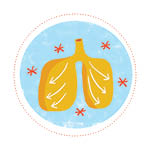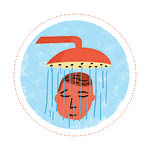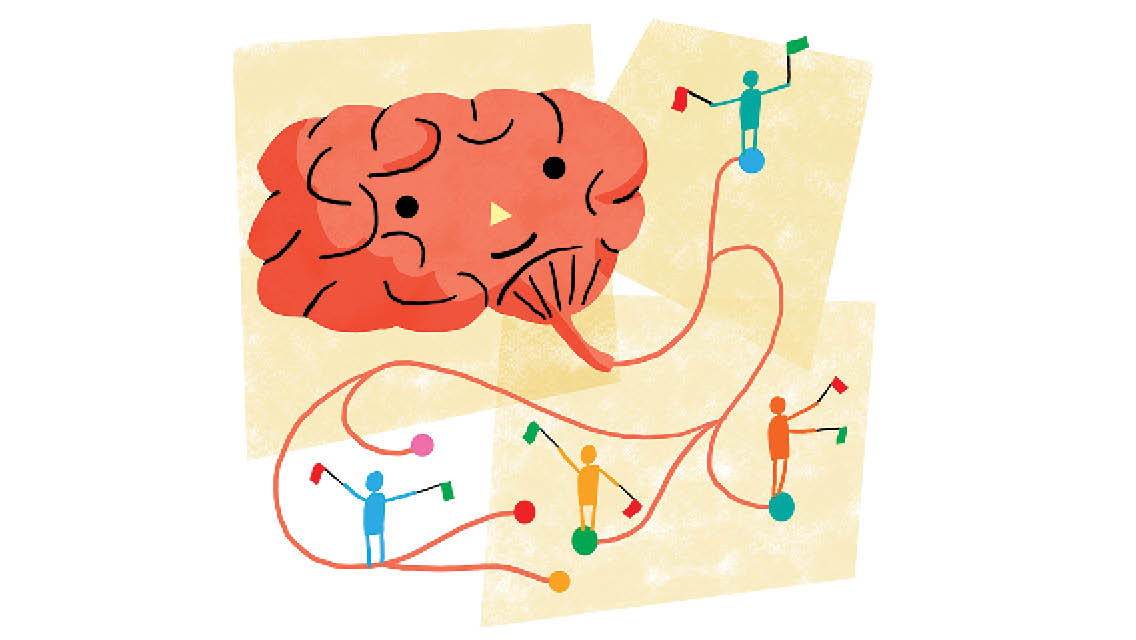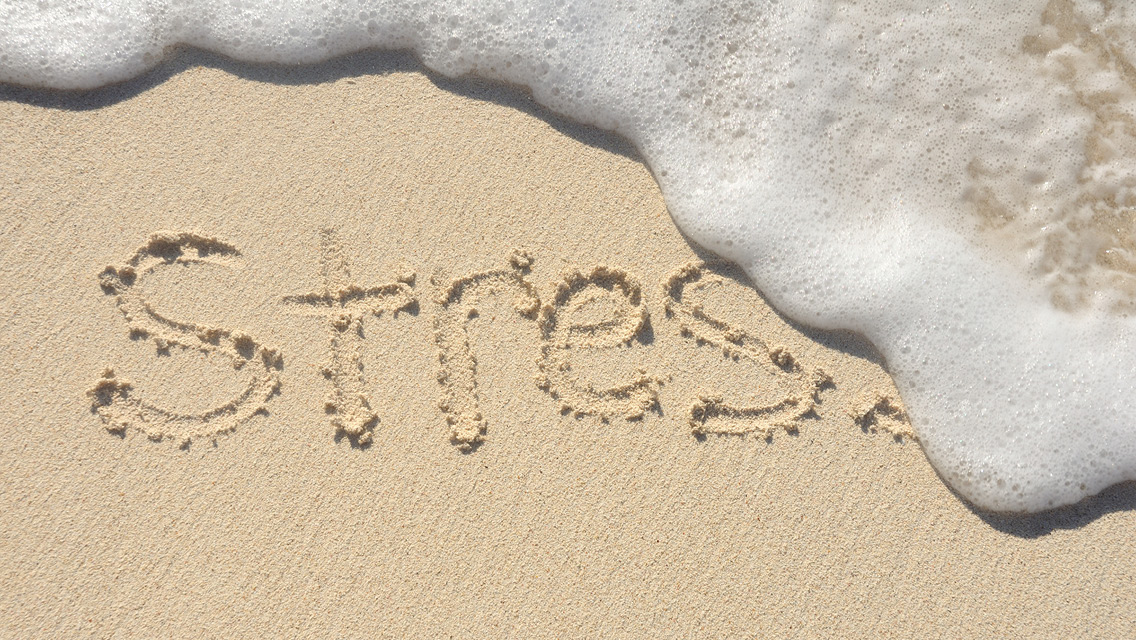One of the best ways to build more resilience is to deliberately stimulate your vagus nerve. Because the SNS is always monitoring our surroundings, while the PNS switches on and off intermittently, stimulating the vagus can make those periods of parasympathetic activity more frequent, says physical therapist and craniosacral-therapy instructor Mariann Sisco, PT, CST-D.
This stimulation has been clinically proven to help people who have life-threatening conditions, such as hard-to-treat epilepsy or treatment-resistant depression. In such cases, a medical device may be implanted near the vagus. Electrical signals from the device, similar to a pacemaker, prompt it to exert its influence.
Other vagal-stimulation treatments are also in the works. An external device won Food and Drug Administration (FDA) approval in 2017 for the treatment of cluster headache and acute migraine. More are in the pipeline.
“We are going to see more and more types of vagus-nerve stimulators for anxiety, depression, and eating disorders,” predicts functional-medicine practitioner Gregory Plotnikoff, MD. “People are already doing vagus-nerve blocks for PTSD-related concerns and getting fabulous results.”
The vagus nerve is involved in the successful use of auricular acupuncture, which focuses strictly on ear points. A small branch of the nerve — the auricular branch — nears the surface of the skin on each ear. The auricular branch of the vagus is mostly sensory, meaning it senses touch, temperature, and moisture on the skin on the inside of the ear; it provides an easy access point for stimulation with acupuncture and acupressure.
Various traditional practices, such as massage, reflexology, craniosacral therapy, yoga, and tai chi, also activate the PNS, which improves vagal tone. “All of this research on the vagus nerve has reaffirmed traditional wisdom around ancient practices,” says Plotnikoff.
The following exercises allow you to indirectly stimulate the vagus nerve on your own.
1. Breathe Deeply
 Deep breathing stimulates pressure receptors in the neck and heart that signal the brain that it’s time to rest and digest. “Deep, calm, diaphragmatic breathing is the No. 1 way to send parasympathetic signals to all of the organs,” says chiropractor and functional-medicine practitioner Navaz Habib, DC. “Everything revolves around the breath.”
Deep breathing stimulates pressure receptors in the neck and heart that signal the brain that it’s time to rest and digest. “Deep, calm, diaphragmatic breathing is the No. 1 way to send parasympathetic signals to all of the organs,” says chiropractor and functional-medicine practitioner Navaz Habib, DC. “Everything revolves around the breath.”
For best results, sit up straight. Exhale completely. Put your right hand on your chest and your left hand on your belly. Breathe deeply through your nose for five to seven seconds, inflating just your belly. Hold the breath for two to three seconds. Exhale through your mouth for six to eight seconds, allowing the belly to fall. Hold the breath out for two to three seconds. Practice increasing your tolerance until you can do this exercise for five minutes per day.
(For more breathing exercises, see “6 Breathing Techniques“.)
2. Gargle
 Gargling stimulates the vagus nerve by activating the laryngeal and pharyngeal muscles at the back of the throat. Habib recommends keeping a cup beside the bathroom sink and using it to gargle water vigorously twice a day, ideally when you brush your teeth. “You know you are doing it properly if you gargle to the point of tearing up.”
Gargling stimulates the vagus nerve by activating the laryngeal and pharyngeal muscles at the back of the throat. Habib recommends keeping a cup beside the bathroom sink and using it to gargle water vigorously twice a day, ideally when you brush your teeth. “You know you are doing it properly if you gargle to the point of tearing up.”
3. Hum or Chant
 The vagus supplies motor signaling to the muscles of the larynx around the vocal cords. Humming and chanting activate the laryngeal muscles and the vocal cords, which then stimulate the motor fibers of the vagus nerve. Habib recommends making a habit of humming or chanting during your commute or while walking the dog. If you choose to chant, try using the word “om” or “amen” and holding the vibration for as long as you can while stretching out the exhale.
The vagus supplies motor signaling to the muscles of the larynx around the vocal cords. Humming and chanting activate the laryngeal muscles and the vocal cords, which then stimulate the motor fibers of the vagus nerve. Habib recommends making a habit of humming or chanting during your commute or while walking the dog. If you choose to chant, try using the word “om” or “amen” and holding the vibration for as long as you can while stretching out the exhale.
(Learn more at “The Healing Power of Sound“.)
4. Take a Cold Shower
 At the end of your normal shower, reduce the water temperature as much as you can bear and let the water wash over your head and the back of your neck. Begin with 30 seconds and gradually work your way up to a few minutes. While standing under the cold shower, work on controlling your breath by taking as many deep belly-breaths as possible, says Habib. “The cold acts like a 50-pound weight on your diaphragm. The end result is a strong vagus nerve and an optimally functioning parasympathetic nervous system.”
At the end of your normal shower, reduce the water temperature as much as you can bear and let the water wash over your head and the back of your neck. Begin with 30 seconds and gradually work your way up to a few minutes. While standing under the cold shower, work on controlling your breath by taking as many deep belly-breaths as possible, says Habib. “The cold acts like a 50-pound weight on your diaphragm. The end result is a strong vagus nerve and an optimally functioning parasympathetic nervous system.”
(Learn more at “The Health Benefits of Cold Conditioning“.)
This was excerpted from “What Happens in the Vagus” which was published in the March 2022 issue of Experience Life magazine.





This Post Has One Comment
This is a very well written article that is highly informative and “raw and sobering” in its content. The concise nature of the recommendations are stated with clarity and empathy. Anyone can benefit from these “ancient practices.” I know I will. Thank you.